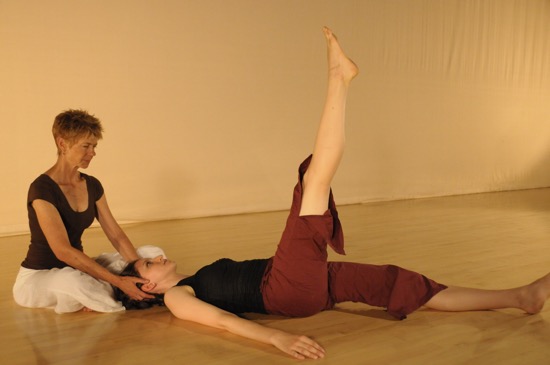
I’m very pleased to bring you this current article, on The Alexander Technique, from a longtime dance / dance medicine colleague of mine, Nada Diachenko, faculty in the Dept. of Theatre and Dance at University of Colorado, Boulder.
Nada was a professional dancer in New York for many years, primarily with Erick Hawkins, before she went into the academic dance world. We first met at the American Dance Festival (Durham, NC) 30+ years ago, and formed a lasting professional and personal friendship based on our mutual interest in dancers’ well-being and health. Over the years we have had many opportunities to work together at CU-Boulder, teaching Dance Wellness course offerings and starting a Dance Wellness Screening Program, along with Pilates.
Nada’s particular focus for many years has been The Alexander Technique (AT) – teaching dancers how this particular neuromuscular re-education practice can help facilitate more comfortable and productive movement in their bodies, both in dance and daily life. I have experienced AT many times over the years, both with Nada and other practitioners, and always strive to incorporate many of the principles daily, to allow more ease in my body movements. I’m so pleased that she offered to write this article for us.
Nada has included some excellent links for further reading / researching on AT – enjoy and pass it on!
– Jan Dunn, MS, Dance Wellness Editor
by Nada Diachenko
Do you ever wonder why you get the same correction year after year?
Or why you continue to work on your turns and they don’t get better?
And maybe you struggle with learning a new style and can’t figure out how to make that easier.
Personal History
Honestly, if I had asked myself those questions as a young dancer I would have had to answer yes. In retrospect, I wish I had studied the Alexander Technique (AT) at 19 when I first discovered an AT book at a NYC bookstore. That book sat on my shelf for years. When I finally had a series of weekly lessons, I discovered ease, freedom of movement, balance, and an overall sense of organization. Then I read that book, Body Learning, by Michael Gelb which led me on a life changing journey as a dancer and teacher.
It wasn’t until I moved to Colorado after a 20 year career in NYC as a professional dancer that I began to understand the power of the technique.
While on faculty at the University of Colorado (CU), I realized I wanted to help dancers go deeper in changing inefficient movement habits. It also became clear to me that I needed AT for myself in order to continue to move and dance into the future with less strain and pain.
So I trained and became a certified AT teacher. I learned skills and gained tools that helped me change some of my very strong compensation patterns from injuries and imbalances from my scoliosis. Incorporating these skills and tools that helped me so much, I developed AT courses for undergraduate and graduate students at CU. One of their basic requirements is to read Body Learning. [Read more…]






